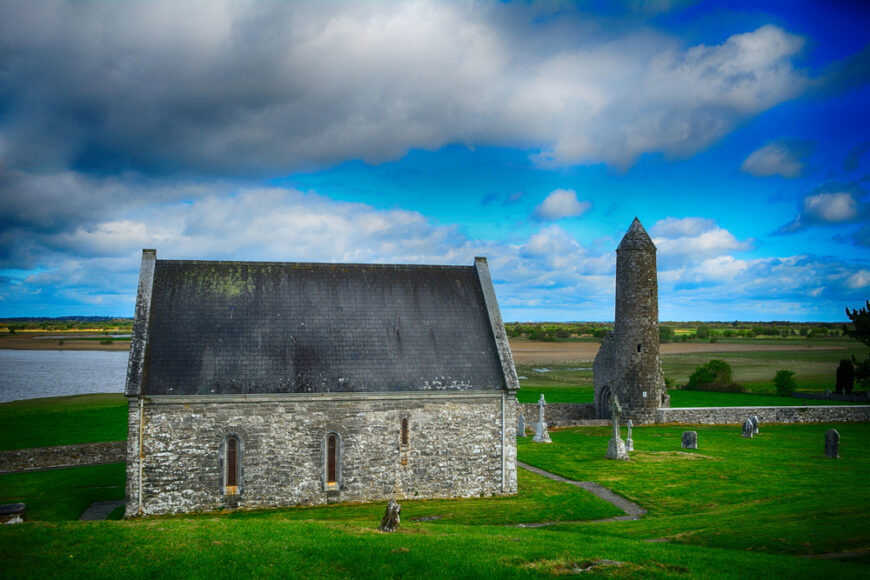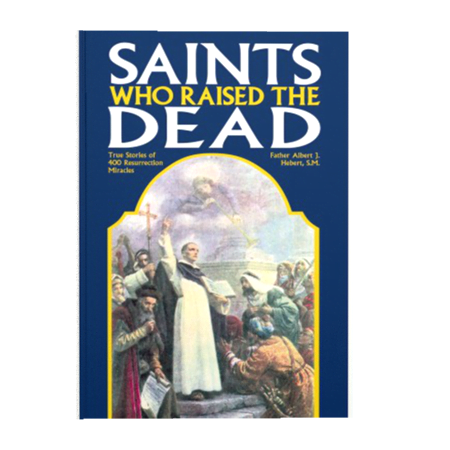“He that eateth my flesh, and drinketh my blood, hath everlasting life: and I will raise him up in the last day.” –John 6:55
It has been said that St. Patrick (c. 389 – c.461) performed a thousand miracles. And why not? Many more (40,000) were prudently attributed to St. Vincent Ferrer, the Dominican mission and “Angel of the Judgment.”
Moreover, the authors knows of no saint for whom there are claimed so many resurrection miracles during on apostolic lifetime as for St. Patrick; there were as many as 39 of these wonders. Thrirty-three are mentioned in one specific report:
“For the blind and the lame, the deaf and the dumb, the palsied, the lunatic, the leprous, the epileptic, all who labored under any disease, did he in the Name of the Holy Trinity restore unto the power of their limbs and unto entire health; and in these good deeds was he daily practiced. Thirty and three dead men, some of whom had been many years buried, did this great reviver raise from the dead, as above we have more fully recorded.”
The above is quoted from The Life and Acts of St. Patrick, translated from the original Latin of Jocelin, Cistercian monk of Furnes of the 12th century, by Edmund L. Swift, Esq., Dublin, 1908. A writer that far back probably had sources not available 800 years or more later. Paul Gallico (in The Steadfast Man) wrote the following concerning the value of tradition: “Tradition is sometimes more to be trusted than written records, and particularly in a country such as Ireland, where in the early days there was no written record and history was handed down by the poets in the form of sagas, and memory was cultivated far beyond what it is today. In pre-Christian Ireland every educated man’s head was the storehouse for the archives of the nation.”

St. Patrick was a great missionary bishop who converted a whole land from paganism, overturning the religion of the druids. He consecrated 350 bishops, erected 700 churches, and ordained 5,000 priests. In less than 30 years the greater part of Ireland was Catholic; St. Patrick so consolidated it in the Christian faith that during the Protestant Revolt Ireland was almost unique in its preservation of the Faith. Even today, people speak of “the faith of the Irish.”
It is hard, indeed impossible, to comprehend such a vast and enduring transformation without the visible support of God through great works and wonders. But that is what Christ promised to His Apostles, and it has been historically demonstrated in the well-attested lives of His great missionary saints.
St. Patrick himself has personally attested to some of these signs and wonders: “And let those who will, laugh and scorn–I shall not be silent; nor shall I hide the signs and wonders which the Lord has shown me many years before they came to pass, as He knows everything even before they came to pass, as He knows everything even before the times of the world.” This seems to apply in particular to his prophetic dream-visions.
In his Letters (as in his Confessions and his Letter to Coroticus), Patrick wrote such things as: “I was not worthy…that He should bestow on me so great grace toward that nation.” And: “I baptized in the Lord so many thousands of persons.” And: “that many people through me should be regenerated to God.” Patrick also wrote: “that I might imitate, in some degree, those whom the Lord long ago foretold would herald His Gospel, for a witness to all nations before the end of the world.” St. Patrick indicated that the Holy Spirit was within him, and he compared himself with St. Paul in a reference to the “unspeakable groanings” of the Holy Spirit.
Further, the ancient author quotes from a reputed “epistle” (letter) of St. Patrick in a country beyond the sea:
“The Lord hath given to me, though humble, the power of working miracles among a barbarous people, such as are not recorded to have been worked by the great Apostles; inasmuch as, in the Name of Our Lord Jesus Christ, I have raised from the dead bodies that have been buried many years; but I beseech you, let no one believe that for these or the like works I am to be at all equalled with the Apostles, or with any perfect man, since I am humble, and a sinner, and worthy only to be despised.”
Perhaps because of rumors and his fame St. Patrick was trying to put things in proper perspective. The word “humble,” in his usage, probably meant “lowly” or “insignificant.” The author of the ancient manuscript observes that he admired the greatness of Patrick’s humility more than his raising of the dead. Patrick himself knew well that his abundance of charismatic gifts (given by God for the glory of God and the benefit of others), far from making him holy, could be a great liability.
Despite his limited number of references fo his own greatness, and despite their modesty, it is obvious to anyone familiar with great missionary saints that the spiritual greatness indicated above and displayed in Patrick’s life would also call for the marvelous gifts often accompanying such apostles–the most common of which is the working of numerous miracles, including the raising of the dead.
Anyone can gather from his writings, and also from the results of his apostolate of 20-30 years, that St. Patrick was a resolute, steadfast “iron man”; he was a bishop who established monastic discipline in a pagan land, who apparently baptized hundreds of thousands, who converted princes and turned pagan princesses into virgin nuns, who converted the worshipers of idols and the sun and impure things, and who organized and built many churches, leaving behind priests to care for souls. These were the tremendous and enduring accomplishments in one apostle’s missionary lifetime.
St. Patrick’s was an achievement unique in history. Thus it would see to be a moral certainty that St. Patrick raised the dead on several occasions. This chapter has been cut down from an originally much longer manuscript-chapter on his reported raisings of the dead, because of the lack of historical records on these matters. Herein are presented only the best substantiated cases.
Since St. Patrick is claimed to have worked 33 resurrection miracles, it seems a moral certitude that he truly must have worked at least a good number of such wonders, even if the count of 33 may not be exactly accurate. (Some details may be confused, and thus two slightly different accounts could actually refer to the same event.) It is only fair to report at least several of these.
One day St. Patricks came to a place called Fearta. On the side of the hill two women had been buried. Patrick ordered the earth removed; in the Name of Christ, he raised them up. The two proclaimed that their idols were vain and that Christ was the true God. Along with the women, many bystanders were baptized. As the ancient writer observes, Patrick not only revived these two from a double death (both temporal and eternal death), but by this miracle he gave spiritual resurrection to many other souls.
An excerpt from Saints Who Raised the Dead:


